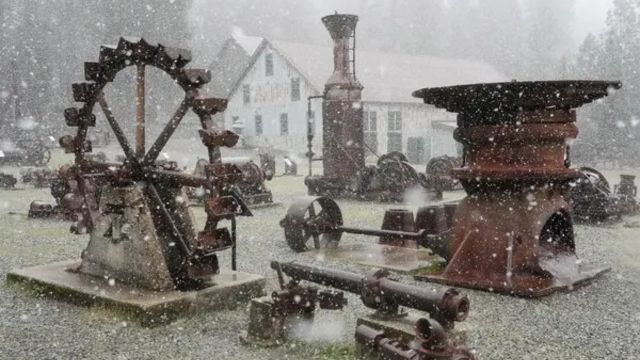Nestled in the Sierra Nevada foothills lies Grass Valley, a quaint former mining town with a rich heritage that spans nearly 175 years. This town, 60 miles northeast of Sacramento, serves as a vibrant testament to California’s history, particularly through its culinary traditions.
Among these, the Cornish pasty stands out as a beloved delicacy, linking the town to its historical roots in Cornwall, England.
Originally crafted as a hearty lunch for miners in Cornwall, the pasty (pronounced “pass-tee,” to rhyme with “nasty”) is a crescent-shaped hand pie known for its buttery, flaky crust and the savory filling of meat and vegetables it encases. This English pastry made its way to California during the 1850s, brought over by Cornish workers who ventured to the gold fields near Grass Valley, such as the Empire mine, in search of fortune.
By the century’s end, Cornish descendants constituted three-quarters of Grass Valley’s population, embedding their culinary heritage deeply within the community’s fabric.
Today, Grass Valley, home to about 14,000 residents, honors its Cornish heritage through various traditions, including an annual festival for St. Piran, the patron saint of Cornwall, and Christmas celebrations that feature Cornish carols and folk tunes—a nostalgic homage to the miners’ heritage.
The pasty, revered as a heritage food, remains a staple in the town, symbolizing a tangible connection to a legacy that, while perhaps faint in memory, becomes vividly alive with each bite.
Gage McKinney, a local historian and descendant of early Cornish immigrants, reflects on the pasty’s significance: “You bite into a pasty, it connects you with all this legacy, which is only vague in your mind, but becomes visceral in your mouth.” This sentiment is echoed in mining communities worldwide, demonstrating the global spread of the pasty through Cornish migration, driven by their sought-after mining expertise.
The tradition of pasty-making persisted in Grass Valley, evolving from home-baked goods to becoming a commercial endeavor, particularly after the decline of mining in the 1960s. Today, establishments like Marshall’s Pasties and Grass Valley Pasty Co., along with Corvus Bakery and local church fundraisers, continue to celebrate and innovate on this traditional recipe, offering both classic and contemporary takes on the dish.
The traditional Cornish recipe—comprising diced skirt steak, potato, onion, and rutabaga—carries historical significance, notably in its practical design. The pasty’s crimped crust, serving as a handle, allowed miners to eat without directly touching the food, a precaution against the arsenic and other metals prevalent in mines.
This ingenious solution epitomized the Cornish pasty’s role not just as sustenance, but as an integral element of the miners’ daily lives.
In Grass Valley, the legacy of the Cornish pasty is more than a culinary tradition; it is a bridge to the past, a celebration of community heritage, and a reminder of the enduring spirit of those who shaped the town’s history. Whether it’s a traditional Cousin Jack pasty or a modern gluten-free variant, each pasty tells a story—a story of migration, adaptation, and survival, baked into the very heart of Grass Valley.

